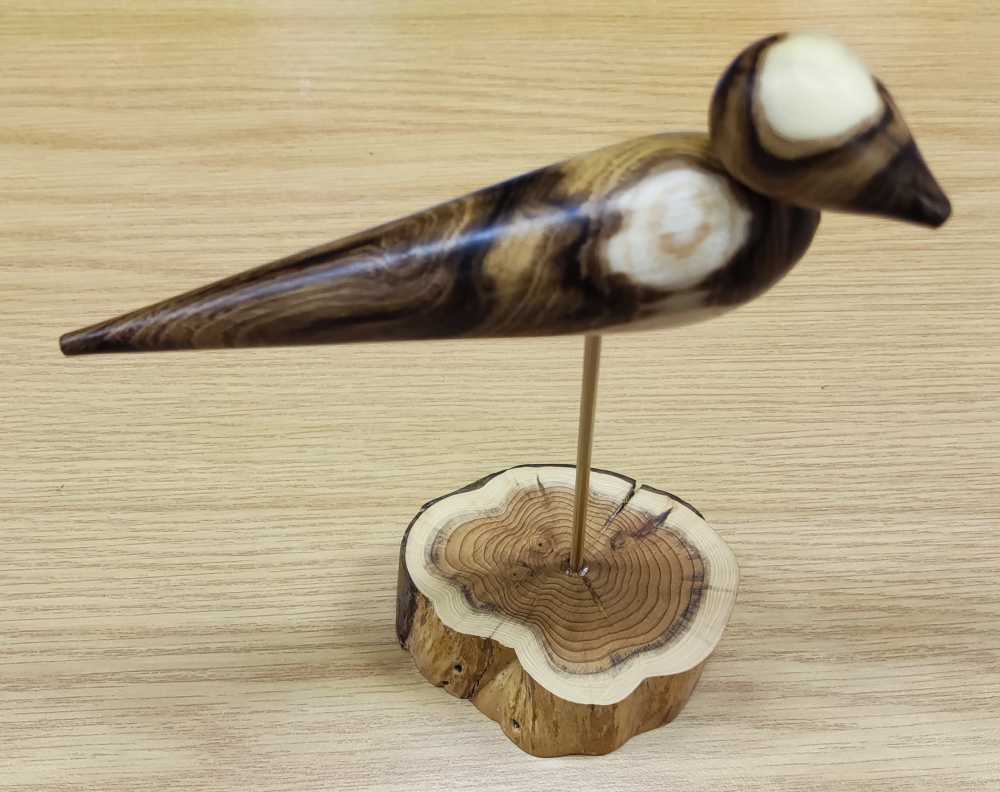The meeting opened with a welcome from Mick Denton and an introduction to our demonstrator this evening, Paul Hannaby (https://www.hannaby.com/).
Paul brought along a selection of black poplar bowl blanks and a variety of woodturning consumables for members to buy.
He had previously asked us what we would like to see demonstrated and it had been agreed that it would be a goblet with barley twist stem, so he brought along some suitable blanks and selected a somewhat knotty piece of box, explaining that he was not using yew because of the toxicity under demo conditions.
He discussed options for ensuring that knots and the (weak) pith did not affect the finished goblet – although not a major issue with box – and then mounted the piece between centres such that the knots would not be in the cup portion of the goblet.
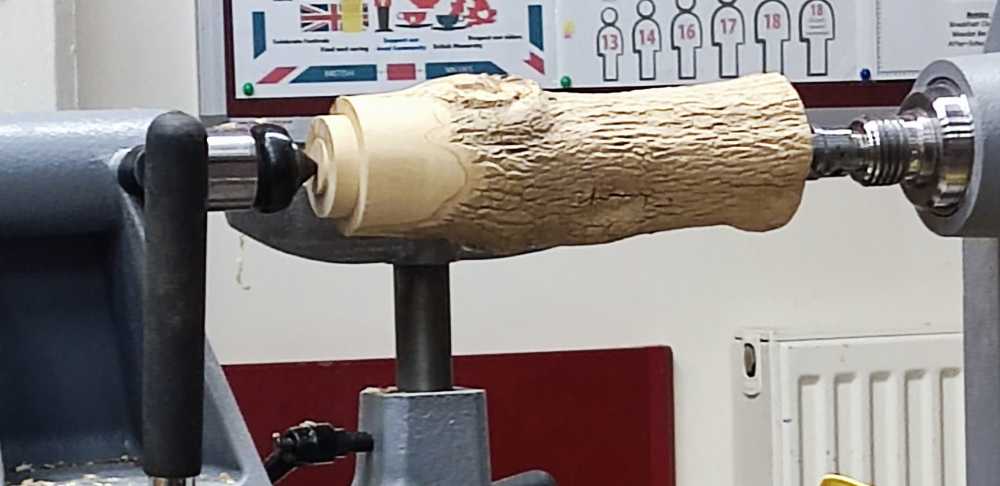
A spindle roughing gouge took the worst of the lumps off before making a tenon on one end with a parting tool. The blank was then mounted in the chuck and the end squared off before he removed the tailstock.
Using a spindle gouge with a fingernail grind, Paul then bored out and commenced hollowing the cup. At this point he pointed out that a half round scraper could be used instead of the spindle gouge or, once the opening is wide enough, a ring tool. The ring tool is his favourite and he proceeded to demonstrate its use at the bottom of the opening to ensure proper bevel support. He said that his website has a description of how to modify a shielded cutter to work in a similar fashion.
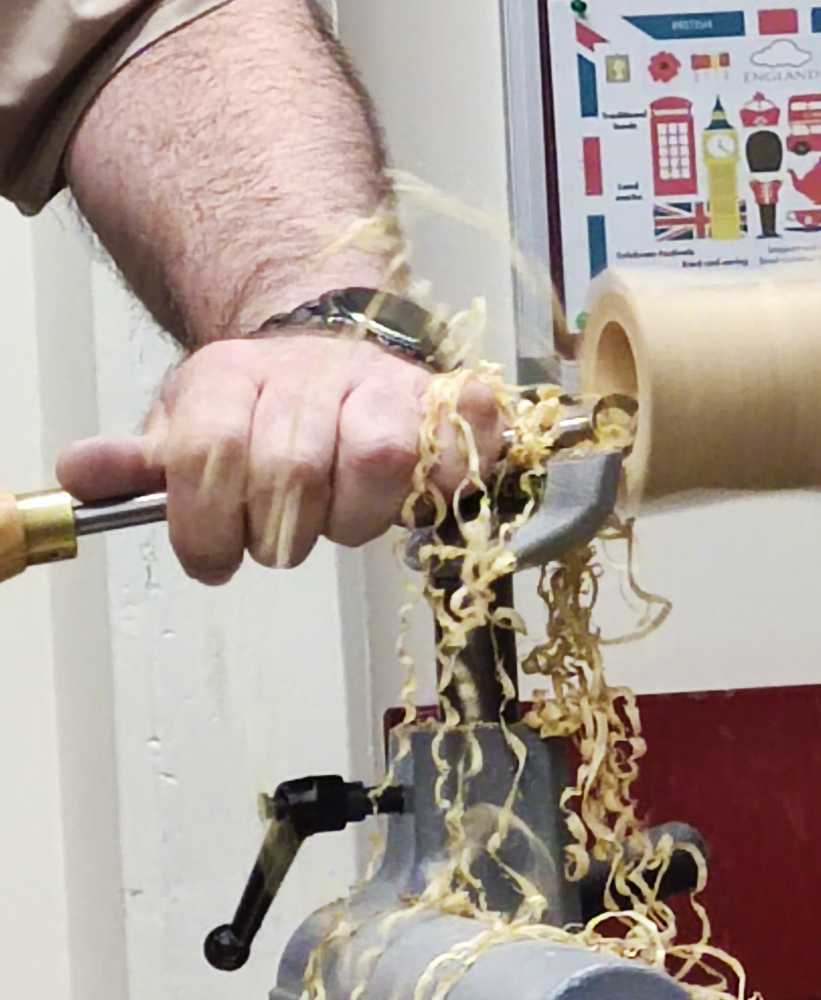
Finally he shaped the rim of the goblet with a spindle gouge and the ring tool and sanded the inside, working through the grits in the usual way.
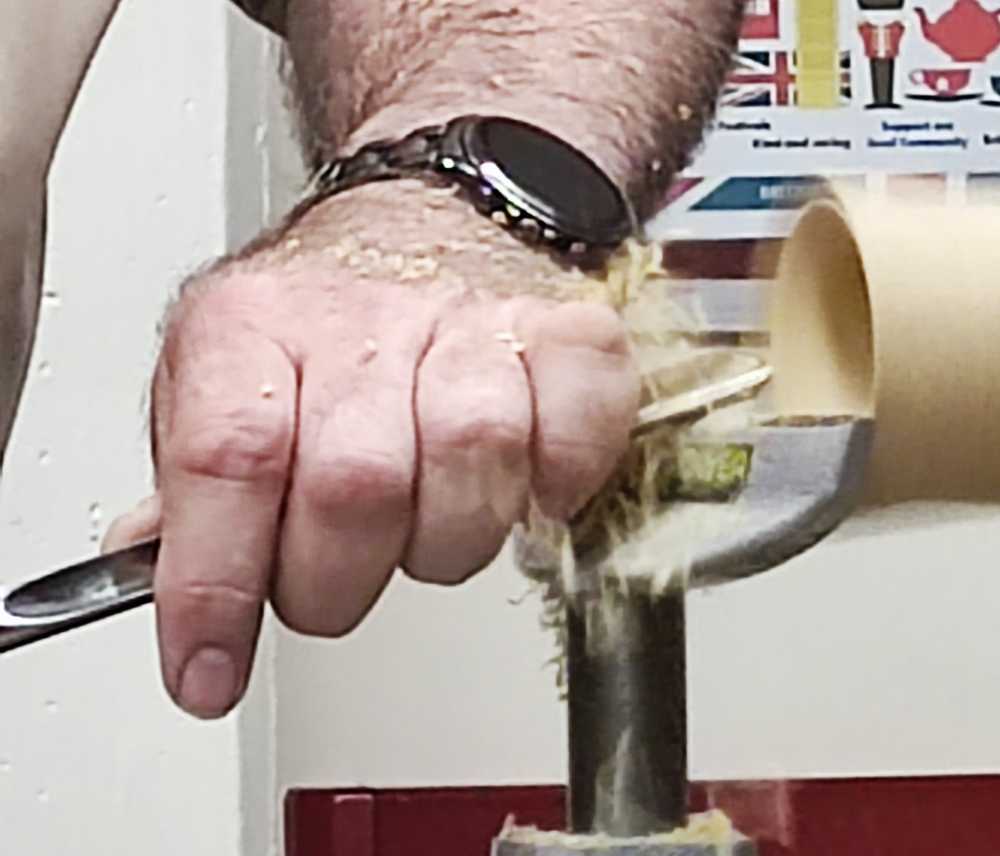
Paul next turned his attention to the outside of the cup with a spindle roughing gouge and spindle gouge, taking care to leave plenty of wood lower down to keep it from vibrating too much. However, as the cup walls become thinner, vibration does become a problem so he used the tailstock and a live centre to hold a polystyrene ball in the cup for support.
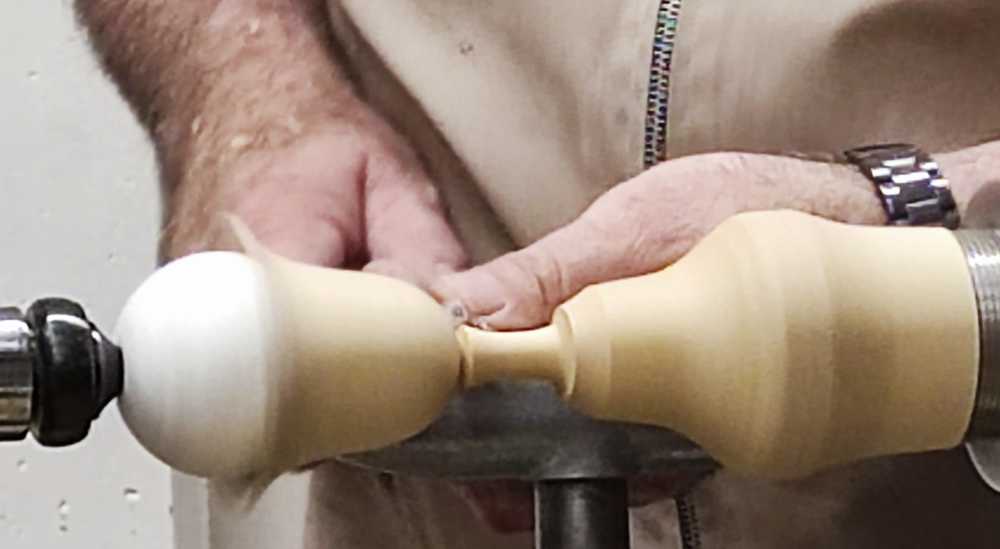
Once down to about 4mm wall thickness, Paul sanded the outside of the cup, taking care to avoid rounding over the crisp edges.
The spindle gauge was used to turn the stem (in stages to maintain its strength) with a skew to add V cuts marking the transition from stem to cup and stem to foot. To finish off the main turning operations, the foot was shaped ready for parting off later on.
Before commencing the barley twist, Paul explained that he generally uses a selection of small round files of varying sizes and degrees of coarseness and also sometimes uses a microplane file.
With the lathe turned off, and starting at the foot, he held the file at around 45 degrees across the stem and turned the chuck by hand whilst filing the wood, until a spiral groove was formed along the stem to the cup. Note that tailstock support was still in place as the stem becomes weaker as grooves were filed into it, and some co-ordination is required to ensure constant spacing between the grooves.
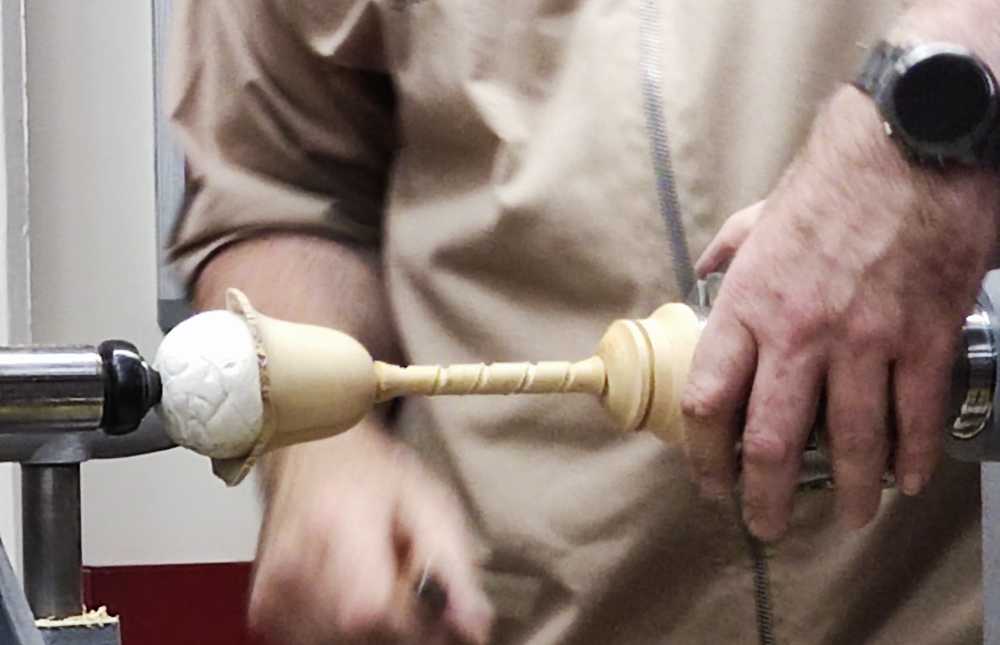
As this was to be a two-start twist, Paul then repeated the process, starting the second groove equidistant between the turns. Once complete, both grooves were deepened to about half the diameter of the file – this usually takes him two iterations but with the hard boxwood, he needed three. The spiral grooves were then widened somewhat with a larger diameter file.
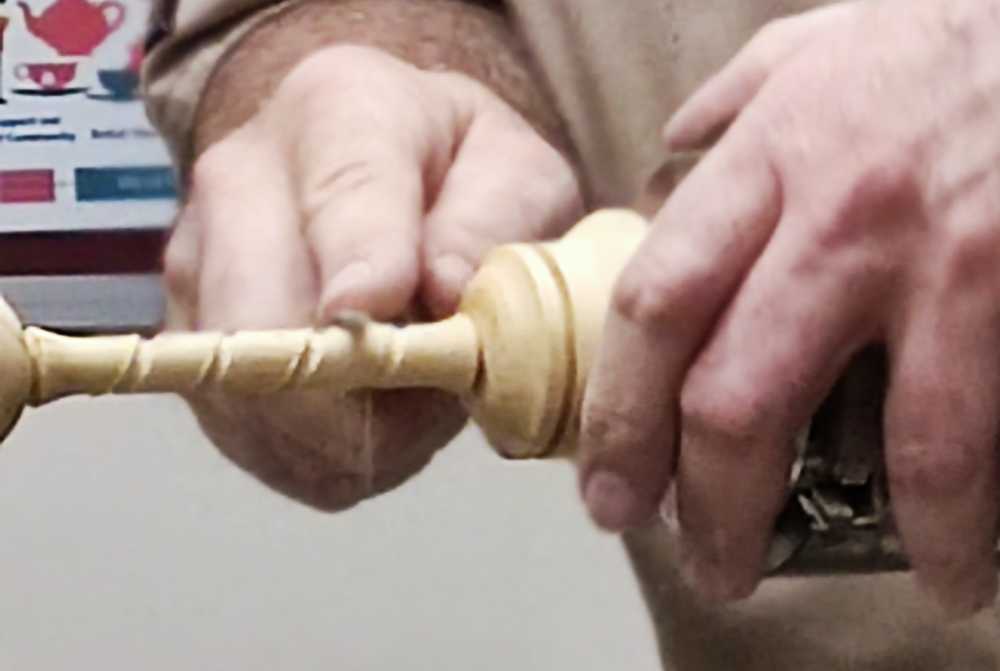
This left grooves with a square edge so he went lightly across the grooves with a file at 45 degrees in the other direction (90 degrees to the spiral direction), then again at 22 degrees to knock any remaining corners off. The resulting grooves were than cleaned up with his finest file, first in the grooves and then across them as before.
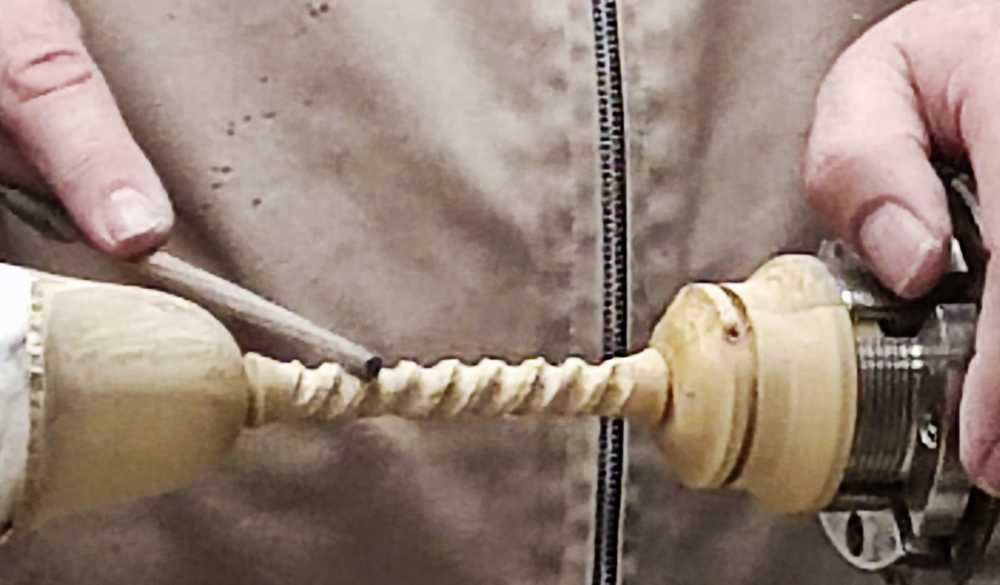
Now the lathe was restarted and the grooves sanded with a piece of abrasive wrapped around a piece of dowel sized to match the grooves, moved back and forth along the stem in the same direction as the grooves.

Finally the tailstock was pulled back and the goblet parted off, holding it by the stem, not the cup.
Paul said that starting the grooves at the cup end of the stem would result in an opposite spiral on a goblet, left hand and right hand spirals being particularly effective if making a pair of goblets.
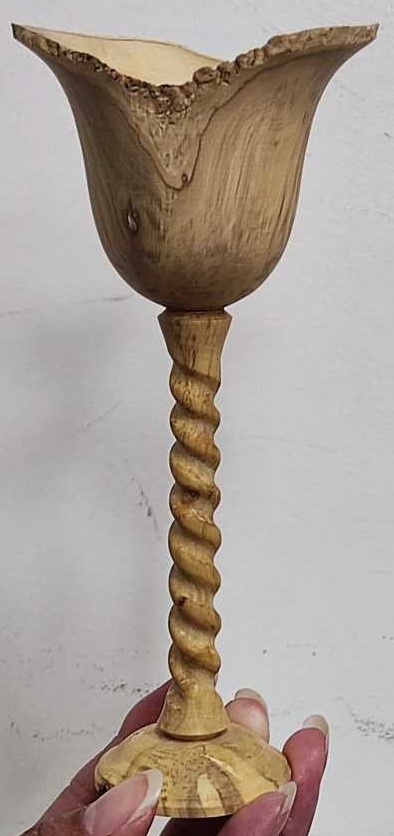
Throughout the demo, Paul explained clearly what he was doing, and why, which was especially interesting when he came to demonstrating the ring tool, something that many people shy away from.
The competiton table this month had a good collection of items.
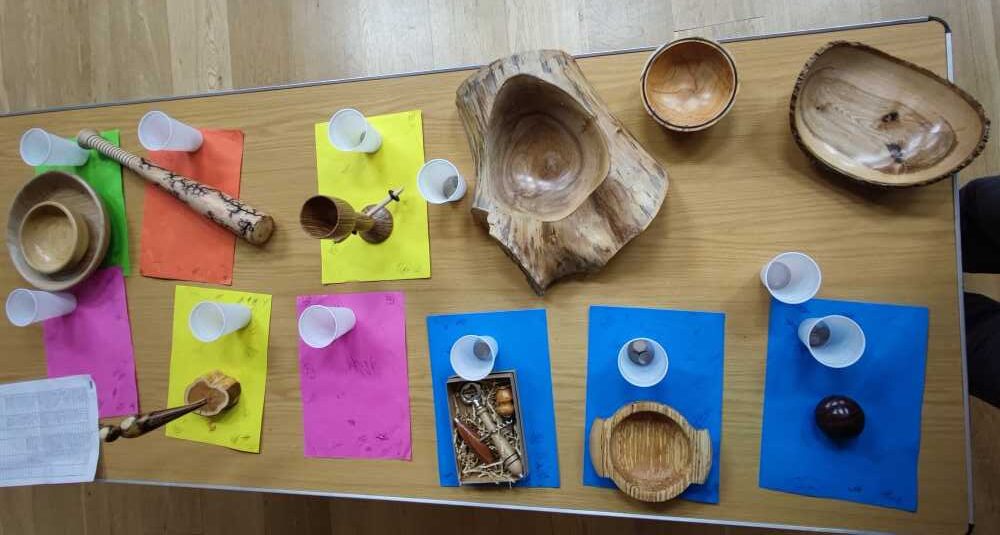
1st place was a rounders bat with fractal burning patterns by Chris Harkin.

2nd place was small box (walnut?) by Ken Garratt.
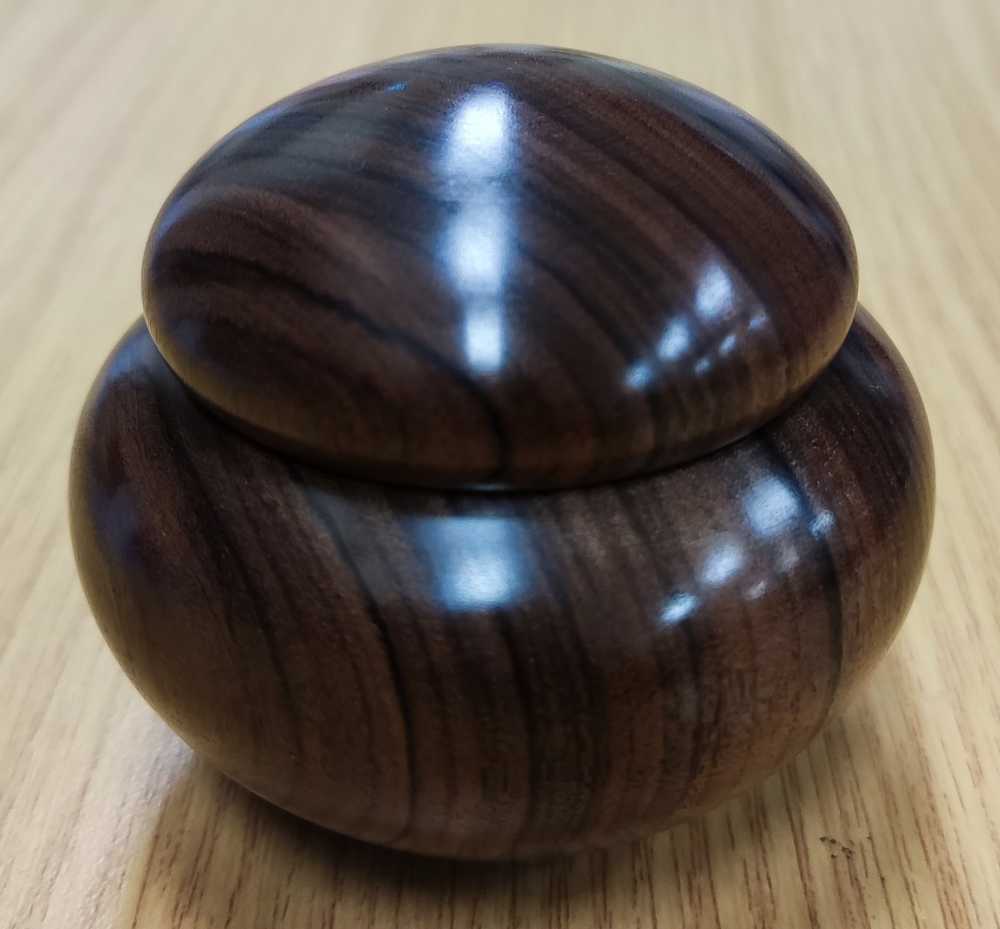
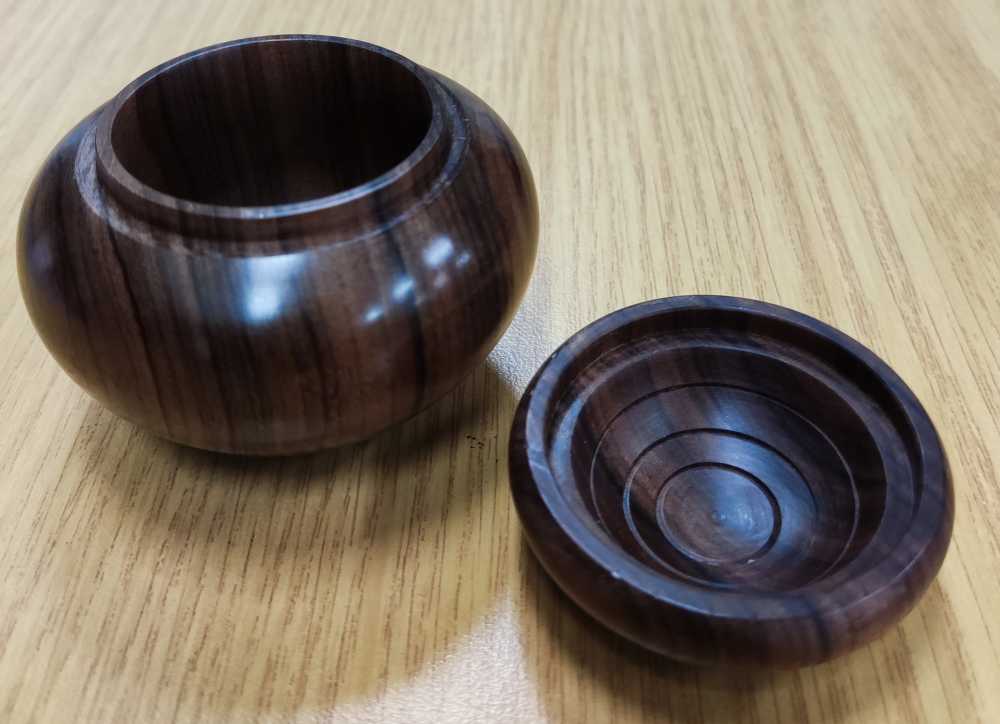
3rd place went to Dave Simms with a laburnum bird on a yew base.
